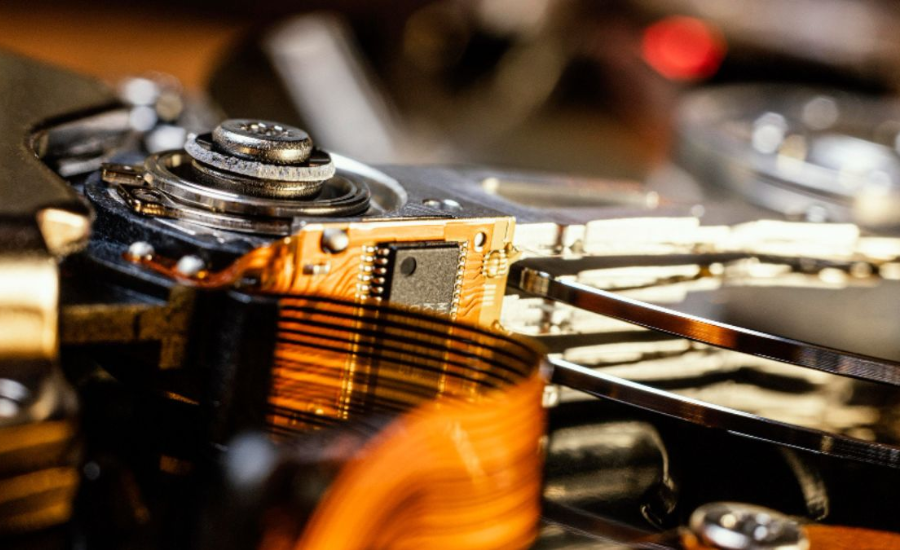A Comprehensive Guide To 61.35-9 367 374.9-01 CAS RepairRepair
Repairing the Central Authentication Service (CAS) can be intricate due to its technical complexities. CAS is a widely used single sign-on (SSO) protocol that centralizes user authentication, allowing access to multiple applications with a single login. However, this complexity can lead to various issues that require prompt and effective resolution. This guide offers a thorough overview of CAS repair, focusing on code section 61.35-9 367 374.9-01. It provides detailed steps, important considerations, and answers to frequently asked questions to help navigate the repair process effectively.
What Is The Centralized Fault Information System (CAS)?
The Centralized Fault Information System, commonly referred to as CAS, is an advanced technological component used in aircraft to monitor and report on the status of various systems and components. CAS plays a crucial role by consolidating fault data from multiple sources into a centralized unit. This real-time aggregation provides pilots and maintenance teams with essential information needed for safe and efficient aircraft operation. The specific model 61.35-9 367 374.9-01 CAS is engineered for particular aircraft types, featuring enhanced diagnostic and analytical capabilities tailored to those aircraft’s requirements.
Importance Of CAS In Modern Aviation
In contemporary aviation, the CAS system is a critical element for ensuring operational safety and efficiency. Its significance can be understood through several key functions it performs:
- Real-Time Fault Monitoring: CAS continuously monitors various aircraft systems, offering real-time updates on their status. This constant surveillance allows for immediate detection of faults or anomalies, which is vital for maintaining the aircraft’s operational integrity.
- Enhanced Decision-Making: By providing comprehensive fault data, CAS supports pilots and maintenance crews in making informed decisions. Quick access to accurate information helps in prioritizing maintenance tasks, addressing issues promptly, and making on-the-fly decisions during flights.
- Preventive Maintenance: One of the primary benefits of CAS is its ability to facilitate preventive maintenance. By tracking and analyzing fault data, it helps identify potential issues before they escalate into serious problems. This proactive approach can significantly reduce aircraft downtime and maintenance costs.
- Safety Compliance: CAS ensures that all critical systems are functioning correctly, helping to maintain compliance with aviation safety regulations. Its detailed fault reporting assists in adhering to safety standards and operational protocols.
- Smooth Flight Operations: The accurate tracking of system health and fault data contributes to a more reliable and smoother flight experience. By minimizing the likelihood of unexpected failures, CAS enhances overall flight safety and passenger comfort.
Common Challenges With CAS Systems

Central Authentication Service (CAS) systems can encounter a range of issues that affect their functionality and overall performance. These challenges can impact the effectiveness of the system, leading to potential safety and operational concerns. Here are some prevalent problems:
- Sensor Failures: CAS systems often rely on various sensors to provide accurate data for optimal performance. When these sensors fail or malfunction, they can transmit incorrect information to the system. This issue can result in poor handling of the vehicle, affecting driving stability and safety. Ensuring that sensors are regularly calibrated and maintained can help mitigate these risks.
- Wiring Damage: Wiring issues are another common problem in CAS systems. Corroded, frayed, or damaged wires can interrupt the communication between different system components. This disruption can lead to inconsistent behavior in CAS functions, impacting both driving comfort and safety. Regular inspection and prompt repair of any wiring damage are crucial to maintaining system integrity.
- Software Glitches: Software-related issues are also frequent in CAS systems. Outdated firmware or compatibility conflicts with other vehicle electronics can cause unexpected errors and trigger warning lights on the dashboard. Keeping the software up-to-date and ensuring compatibility with other system components are essential for smooth operation.
- Environmental Factors: External factors such as moisture intrusion can exacerbate existing issues within the CAS system. Moisture can compromise electronic connections, leading to further malfunctions. To prevent such problems, it’s important to protect the system from environmental hazards and regularly check for any signs of moisture-related damage.
By being aware of these common challenges and taking proactive measures, you can help ensure that your CAS system operates effectively and safely.
Troubleshooting And Diagnostic Procedures
When addressing issues with the 61.35-9 367 374.9-01 CAS system, a systematic approach to troubleshooting and diagnosis is essential. Follow These Steps to Navigate the Process Effectively:
- Check Error Codes: Start by examining the error codes generated by the CAS system. These codes provide valuable insights into specific malfunctions and can help pinpoint the root cause of the issue. Refer to the system’s diagnostic manual for guidance on interpreting these codes.
- Inspect Wiring and Connectors: Conduct a thorough inspection of all wiring and connectors associated with the CAS system. Look for signs of wear, damage, or corrosion that could impair electrical connections. Addressing any identified issues promptly can prevent further system failures.
- Perform a Visual Inspection: Examine all components of the CAS system for visible signs of leaks, physical damage, or irregularities. A detailed visual inspection can help identify any physical problems that might be affecting system performance.
- Utilize Diagnostic Tools: If available, use diagnostic tools to perform live data analysis of the CAS system. This real-time data analysis can reveal irregularities and provide insights into the system’s operation, aiding in accurate diagnosis.
- Update Software: Ensure that the CAS system’s software is up-to-date. Outdated software can lead to compatibility issues and errors. Regular updates help maintain compatibility and smooth operation.
- Consult Manufacturer Guidelines: If troubleshooting efforts do not resolve the issue, refer to the manufacturer’s guidelines for further instructions. Professional technicians specializing in CAS repair may also be consulted for advanced troubleshooting and repair.
By following these diagnostic steps, you can effectively address issues with your CAS system, ensuring its optimal performance and reliability.
Essential Tools And Resources For CAS System Repair
To effectively repair CAS (Central Authentication Service) systems, it’s crucial to have the right tools on hand. A reliable diagnostic scanner that’s compatible with your CAS setup is a great starting point, as it will help pinpoint issues quickly and accurately. This can save you time and prevent unnecessary guesswork.
Basic hand tools, such as a set of wrenches, screwdrivers, and pliers in various sizes, are indispensable for performing hands-on repairs. Additionally, a multimeter is vital for diagnosing electrical problems, allowing you to measure voltage, current, and resistance across components.
Access to specialized tools may also be necessary depending on the complexity of the repair. Explore online forums and communities, where you can connect with other enthusiasts and professionals who share their experiences and solutions. Their insights might lead you to fixes or ideas that you wouldn’t have considered on your own.
Manufacturer manuals are another valuable resource; they offer detailed instructions specific to your CAS model, ensuring that you follow the correct procedures. Many manufacturers also provide online support through troubleshooting guides and FAQs, which can further assist you in resolving system issues efficiently.
Preventive Measures To Maintain CAS System Performance

Maintaining your CAS system’s performance is best achieved through preventive care. Regular inspections can help you spot potential problems early, before they develop into major issues. Be attentive to any unusual noises or warning indicators in your vehicle that could signal a malfunction.
Keep the CAS system clean and free of debris, as dirt accumulation can cause malfunctions over time. A simple routine cleaning can greatly reduce the risk of issues.
Make sure all connections within the system are tight and secure, as loose components can lead to unpredictable performance and unnecessary repair costs. Opt for high-quality replacement parts to ensure the longevity of your CAS system; while cheaper alternatives might seem economical, they often lack the durability needed for long-term reliability.
Lastly, stay up-to-date with any software updates provided by the manufacturer. These updates can enhance the system’s functionality and security, making them essential for the optimal operation of your CAS system.
Step-by-Step Guide to Repairing the 61.35-9 367 374.9-01 CAS Repair
Repairing the CAS (Central Authentication Service) model 61.35-9 367 374.9-01 involves a structured approach to ensure that the system is fully restored to its optimal state. Here’s a detailed guide through each stage of the process:
Step 1: Comprehensive Diagnosis
The repair process begins with a comprehensive diagnostic evaluation. Technicians employ specialized diagnostic tools to interface with the CAS system, retrieving fault codes that indicate specific issues. Key diagnostic techniques include:
- Electronic Diagnostic Tools: Utilizing diagnostic software or laptop-based tools that connect directly to the CAS unit allows for real-time data collection and analysis.
- Visual Inspection: Physically inspect the CAS unit along with associated wiring and connectors, checking for signs of wear, corrosion, or physical damage that might contribute to system malfunctions.
Step 2: Fault Code Analysis
After retrieving fault codes, the next step is to carefully analyze them. Each fault code provides insights into specific problems, guiding technicians toward the appropriate repairs. This step often involves consulting manufacturer manuals or troubleshooting guides to accurately identify the underlying issues.
Step 3: Executing Repairs
With the diagnosis complete and faults identified, the necessary repairs can be implemented. Depending on the faults detected, this phase may include:
- Sensor Replacement: Defective sensors should be replaced with high-quality OEM (Original Equipment Manufacturer) parts to maintain system integrity and compatibility.
- Software Updates: Updating the system software to the latest version can address known glitches and improve performance. It’s crucial to ensure that all updates comply with relevant safety standards.
- Wiring Repairs: If damaged wires or poor connections are discovered, they should be repaired or replaced to restore proper communication within the system.
- Hardware Servicing: When physical components are found to be faulty, servicing or replacing these parts is essential to restore full functionality.
Step 4: Post-Repair Testing
Following the completion of repairs, thorough testing is essential to verify that the CAS operates correctly. This testing phase includes:
- Functional Testing: Ensuring that the CAS performs according to its specifications and interacts seamlessly with other systems.
- Fault Simulation: Simulating fault conditions to test the CAS’s ability to detect and report issues accurately, confirming the reliability of the repairs.
Step 5: Documentation and Compliance
Detailed documentation of the entire repair process is crucial for maintaining accurate records and ensuring compliance with regulatory standards. This includes:
- Repair Documentation: Recording all steps taken during the repair, including parts used, tests conducted, and any observations made during the process.
- Regulatory Compliance: Verifying that all repairs align with aviation authority regulations, such as those set by the FAA (Federal Aviation Administration), to ensure the safety and legality of the maintenance work.
Step 6: Ongoing Monitoring and Maintenance
Once the CAS system is repaired and fully operational, ongoing monitoring is vital. Regular maintenance checks can help detect emerging issues early, preventing more severe problems and ensuring the system remains in peak condition.
The Critical Role Of Regular Maintenance 61.35-9 367 374.9-01 CAS Repair
Maintaining CAS (Central Authentication Service) systems regularly is essential for ensuring their optimal performance and extending their lifespan. These systems play a crucial role in controlling key functions, so neglecting their upkeep can lead to significant issues that impact both safety and functionality.
Proactive Inspections
By conducting scheduled inspections, minor issues can be detected and addressed before they evolve into more severe and costly failures. This proactive approach not only helps in avoiding unexpected downtime but also results in long-term savings on repairs and replacements.
Enhanced Safety and Reliability
Routine maintenance is directly linked to enhanced safety. A well-maintained CAS system significantly lowers the risk of sudden malfunctions that could compromise the safety of users or disrupt vehicle operations. Regular checks ensure that the system operates smoothly, providing peace of mind for operators and technicians alike.
Adherence to Manufacturer Specifications
Consistent servicing ensures that all system components continue to meet the original manufacturer specifications. This compliance not only optimizes the performance of the CAS system but also helps preserve any existing warranties, which can be voided by improper maintenance practices.
Fostering a Culture of Accountability
Adhering to a regular maintenance schedule cultivates a culture of accountability among all involved—operators, technicians, and maintenance teams. When the importance of regular care is understood and practiced, it fosters reliability and builds trust within your team or organization, ultimately contributing to the overall efficiency and success of operations.
Global Perspectives On Repairing the 61.35-9 367 374.9-01 CAS Repair
North America
In North America, repairing the 61.35-9 367 374.9-01 CAS module is typically handled by a network of authorized dealerships and independent automotive shops that specialize in electronic system repairs. These service providers use sophisticated diagnostic tools and software to ensure that repairs and reprogramming are precise and meet manufacturer standards. The availability of advanced technology and skilled technicians in this region supports high-quality repair outcomes.
Europe
European countries, particularly Germany, place a strong emphasis on precision and reliability when it comes to CAS module repairs. The repair process often involves using specialized tools and software specified by the manufacturer, ensuring that the module functions seamlessly within the vehicle’s overall system. This rigorous approach is reflective of Europe’s commitment to automotive excellence, aiming for long-term compatibility and system reliability.
Asia
In Asia, with a focus on countries like Japan and South Korea, CAS module repairs are often integrated into broader vehicle diagnostic and maintenance routines. These repairs leverage cutting-edge technology to minimize downtime and enhance the efficiency of the repair process. The integration of CAS repairs with comprehensive vehicle diagnostics allows for swift and effective maintenance, reflecting the region’s strong emphasis on technological advancement and efficiency in automotive services.
You may also read: 1-0-13-spiritus-trainer-game-copy
FAQs
1. What is a CAS module and why is it important?
The CAS (Central Authentication Service) module is an integral part of a vehicle’s electronic system, responsible for controlling key functions such as ignition, door locking, and security features. Proper functioning of the CAS module is crucial for vehicle security and overall performance.
2. Can CAS module repairs be done by any mechanic?
No, CAS module repairs require specialized knowledge and tools. It is recommended to have these repairs performed by authorized dealerships or independent shops that specialize in automotive electronics and have the necessary diagnostic equipment and software.
3. Why is precision important in CAS module repairs, especially in Europe?
Precision is vital because the CAS module interacts with multiple systems within the vehicle. In Europe, particularly in countries like Germany, there is a strong emphasis on using manufacturer-specified tools and software to ensure repairs are precise, compatible, and reliable over the long term.
4. How do CAS repairs in Asia differ from other regions?
In Asia, particularly in Japan and South Korea, CAS module repairs are often integrated into overall vehicle diagnostics. This approach, combined with the use of the latest technologies, allows for efficient repairs and minimal disruption to vehicle operation.
5. Are software updates important for CAS modules?
Yes, software updates are essential for maintaining the performance and security of CAS modules. These updates often fix known issues, enhance functionality, and ensure compatibility with other vehicle systems.
6. What should I do if my CAS module fails?
If your CAS module fails, it’s best to consult with a professional who specializes in automotive electronics. Avoid attempting DIY repairs, as the module’s complexity requires advanced diagnostic tools and expertise to ensure safe and effective repairs.
Conclusion
The repair of the 61.35-9 367 374.9-01 CAS module varies globally, reflecting regional approaches to automotive maintenance and repair standards. In North America, repairs are widely accessible through both authorized dealerships and specialized independent shops equipped with advanced diagnostic tools. Europe, with its strong emphasis on precision, uses specialized tools and software to maintain the high standards expected in the automotive industry. Meanwhile, Asia’s integration of CAS repairs into general vehicle diagnostics, particularly in technologically advanced nations like Japan and South Korea, underscores the region’s focus on efficiency and innovation.
Regardless of the region, the key to successful CAS module repair lies in using the right tools, adhering to manufacturer guidelines, and ensuring that repairs are carried out by skilled professionals. By following these best practices, vehicle owners can ensure that their CAS systems remain reliable, secure, and fully functional.
For more information and any kind of updates join us on Thrill Rise






